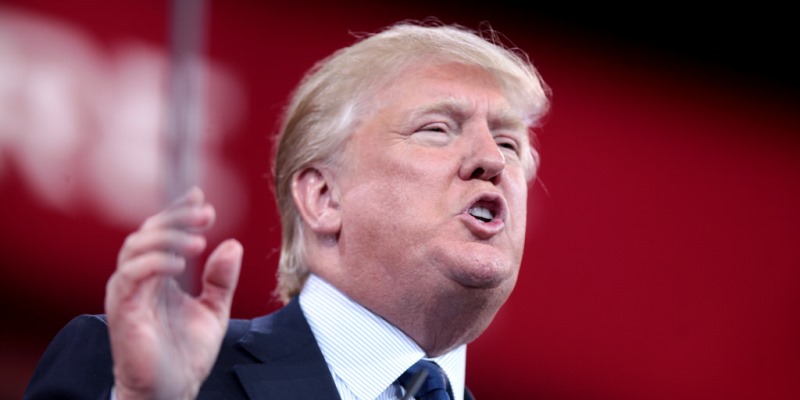Trump’s trade war—backing us into the 1930s?

A new research paper by economists David Jacks of Simon Fraser University and Dennis Novy of the University of Warwick makes me think the continuing U.S.-China trade war may be backing us into the 1930s.
“Backing us in” because we’re at a stage where, in the reverse of what happened in the 1930s, a trade war seems to nudging the world toward an economic slowdown. In an editorial, the Wall Street Journal this week warned of a “Navarro recession,” after Donald Trump’s economic adviser, Peter Navarro, who The Journal said was the only member of President Trump’s economic team to recommend the new round of tariffs against China that went into effect last week. Mr. Navarro is best known as the author of 2012’s Death by China, three words that say all you need to know about his world view.
In the 1930s, by contrast, rather than trade policy causing a downturn, worldwide “deflation,” as downturns were called then, led most countries to go protectionist. They did so mainly for macroeconomic reasons: to try to increase domestic production. And of course because everyone did it the effort failed: international trade simply collapsed. According to the study, between 1929 and 1932 real exports fell 49.1 per cent, much more than the 10.1 per cent decline in world GDP.
So the thirties experienced downturn first, then protection, the reverse of what may be happening today. Or at least that’s more or less the order of events. As always, reality isn’t quite clear-cut. Thus the drafting of the United States’ infamous Smoot-Hawley tariffs began in the summer of 1929, before that October’s calamitous stock market crash. (An interesting footnote: Canada actually “responded” to Smoot-Hawley with its own tariff hikes in June 1930, a month before the U.S. law was finally passed.)
A second difference between now and then is that the worldwide blizzard of protectionism wasn’t generally bilateral, unlike the current China-U.S. trade war. Rather, countries imposed across-the-board tariffs on virtually all their trading partners. Then, gradually through the 1930s, they negotiated bilateral exceptions. As Jacks and Novy put it, countries “scrambled to put up protectionist walls against all comers and then to punch holes through them via bilaterally-negotiated systems of preferences.” Canada and the U.S. made their first post-Smoot bilateral deal in 1935. We also made deals with Australia, the Irish Free State (as it was called), New Zealand, South Africa, Southern Rhodesia, Newfoundland—yes, that Newfoundland, which was still a separate British dominion—and India. In time, and after a second world war, successive bilateral liberalizations led to the General Agreement on Tariffs and Trade, whose guiding principles have governed international trade since. Or at least did until January 2017, when Donald Trump’s inauguration may have chimed its death knell. We shall see.
One effect of the 1930s was the emergence of trade blocs. The starkest example of this, Jacks and Novy find, was the British Commonwealth (which for six dominions officially morphed from the British Empire in 1931). Paradoxically, the 1930s were a “light gravity” decade for the Commonwealth, to use a term from novelist Kurt Vonnegut. Economists like to use “gravity equations” to analyze and predict trade. Just as the gravitational force between two objects is directly proportional to their masses and inversely proportional to their distance from each other, trade between two countries seems to be directly proportional to their GDPs and inversely proportional to their distance from each other.
But in the 1930s distance seemingly became less and less important to the countries of the British Commonwealth, who traded with each other more and more. Mainly this was because of the Ottawa Agreement of 1932 at which Commonwealth countries decided to offer each other trading preferences—thus formally ending the United Kingdom’s almost full century of official free trade and lightening the economic gravity among them.
I read this study and its interesting result about Britain’s trade with her former colonies a day after the new British foreign minister, Dominic Raab, visited Ottawa and met with Canada’s Minister of Foreign Affairs Chrystia Freeland. One obvious topic of interest—on which they managed, like good diplomats, to tell us nothing of interest—is what happens to trade relations between the U.K. and Canada if the U.K. leaves Europe, as it is scheduled to do on Halloween—at midnight no less. Will we see a revival of Commonwealth preferences?
As Maclean’s Paul Wells points out, until recently the two countries had been talking about post-Brexit economic relations. The quickest and most obvious course would be to agree that Canada’s new CETA agreement with Europe (the “Canada-Europe Comprehensive—but not progressive—Economic and Trade Agreement”) carries over. On the other hand, because what made negotiating sense for Canada and Europe might not make the greatest sense for Canada and the U.K.—the political trade-offs on various questions could well be different—it might make even more sense for the two countries to modify CETA to suit their own preferences rather than those of the U.K.’s 27 soon-to-be-former associates in the EU.
In fact, the countries were doing just that until, with 90 per cent of a deal done, Canada apparently pulled the plug. Why? If the U.K. Brexits without a deal with Europe, it’s planning serious unilateral trade liberalization. Canada’s smarty-pants government figures: if that happens, why negotiate concessions when a U.K. desperate to keep its trade going will be opening up its market with nothing asked for in return?
Too bad the government didn’t ask Canadians. The biggest winners in unilateral British market-opening are British consumers. Though our producers will get fuller access to the British market, Canadian consumers will still languish behind our various protections against real free trade. Who’s the real smarty-pants in that outcome?
Author:
Subscribe to the Fraser Institute
Get the latest news from the Fraser Institute on the latest research studies, news and events.

